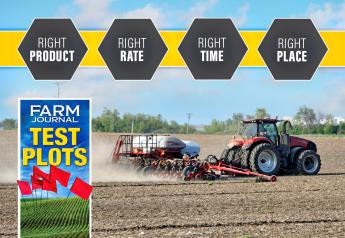U.S. net farm income peaked in 2013 at $123 billion (in nominal terms) -- a year that was also the highest inflation-adjusted level since 1973. Since that record level was achieved, the supply impacts from three consecutive bumper crops in the United States between 2013 and 2015 and no significant supply disruptions in other major food producing countries has driven down crop prices across the board. As a result, USDA's Economic Research Service has projected 2016 net farm income at $54.8 billion, a decline of 55 percent in just three years.
The boom and bust nature of the U.S. agricultural sector is one of the main reasons that farm bills are revisited every five years or so, because changing market conditions can expose weaknesses or flaws in existing farm programs.
For
example, satisfaction with having captured baseline funding by trading in countercyclical 'deficiency payments' for the new direct payment program in the 1996 farm bill quickly faded in 1998-99 after the Asian financial crisis dampened export demand for U.S. commodities and led to a significant decline in commodity prices.
After providing ad hoc assistance to farmers to cushion against the impact of low prices in Market Loss Assistance (MLA) Payments totaling more than $18 billion between 1998 and 2001, Congress actually started work on a replacement farm bill more than a year before the FAIR Act of 1996 was due to expire.
For purposes of comparison, net farm income fell only 19 percent in nominal terms between 1996 and 1999, just one-fifth of the recent decline described above.
However, the 105th and 106th Congresses in the late 1990's had greater flexibility to respond generously to farmers' financial stress because the federal budget was in a brief period of surplus, so they were able to do much more to plug that 1990's income shortfall than the current Congress.
A combination of large loan deficiency payments (LDP's) and marketing loan gains through the loan program and additional ad hoc payments such as the MLA payments described above provided farmers with nearly three times the level of direct government payments in 1999 as they had received in 1996.
Absent that increase, farmers would have seen their net farm income fall by more than 50 percent over that period.
In contrast, direct government payments to farmers are projected to increase only 26 percent between 2013 and 2016.
This accounts only for higher payments being made under the Price Loss Coverage (PLC) and Agricultural Risk Coverage (ARC) programs due to lower crop prices across the board but not low enough for gains from the marketing loan program to kick in, except for peanuts.
Upland cotton producers were excluded from participation in either the PLC
or ARC
programs in the 2014 farm bill due to the need for the U.S. government to comply with the findings of the WTO case filed against their programs by the government of Brazil in 2003. Instead, they were given the chance to sign up for a shallow loss program to supplement individual crop insurance coverage (called STAX), a program that the National Cotton Council helped to design. Unfortunately, cotton farmers have found this program to be relatively unattractive, with less than one-third of planted acres covered by a STAX policy in the 2015/16 crop year. The cotton sector sought to coax additional payments out of USDA by petitioning the Secretary of Agriculture to designate cottonseed as an 'other oilseed' under the provisions of the 2014 farm bill, thus qualifying this cotton co-product for price support payments. Even with the support of many members of Congress, this effort was unsuccessful, as USDA lawyers advised the Secretary that the farm bill did not give him such authority.
The House Agriculture Committee held a hearing on February 24 examining the state of the rural economy, and announced plans to hold additional hearings at the subcommittee level to undertake a more detailed examination of some of the key factors driving the current slump. To date, three of those subcommittee hearings have been held, and none of the opening statements of the chairmen of those subcommittees even mentioned the possibility of seeking legislation that would provide immediate financial relief to hard-pressed American farmers.
Under Congressional paygo rules, no new spending can be authorized unless it is offset with cuts to other programs under the Committee of jurisdiction--such rules make it much more difficult to provide ad hoc assistance to American farmers, or any other stakeholder group for that matter.
It seems likely that both the House and Senate Agriculture Committees will begin their work on the next farm bill early in 2017, after the new 115th Congress is sworn in.
If past practices hold, both will start with several broad hearings held out in key farm states, then follow up with more subject-specific hearings in Washington, D.C. Unless there is an unexpected improvement in the U.S. farm economy over the next year, the Committees will likely seek to move fairly quickly to pass a new farm bill, with the hope to have it in place well before the current farm bill expires on September 30, 2018, perhaps even to cover the 2018/19 crop year. Any fixes to address weaknesses or flaws identified in the 2014 farm bill will almost certainly have to be made within existing baseline budgetary resources. Significant political capital will doubtless have to be devoted to just maintaining level funding, as there could be pressure both from the next Administration and other members of Congress to cut farm program spending.








